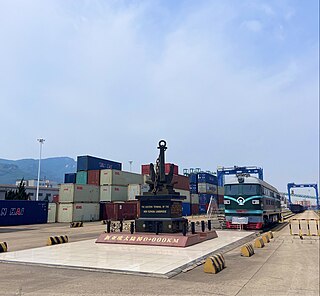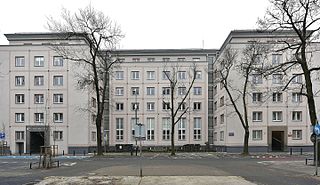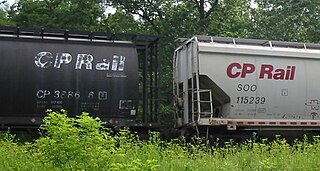 W
WThe Cape Town Convention on International Interests in Mobile Equipment, or Cape Town Treaty is an international treaty intended to standardize transactions involving movable property. The treaty creates international standards for registration of contracts of sale, security interests (liens), leases and conditional sales contracts, and various legal remedies for default in financing agreements, including repossession and the effect of particular states' bankruptcy laws.
 W
WNewrest Wagons-Lits, formerly Compagnie internationale des wagons-lits, also CIWL, Compagnie des Wagons-Lits, or just Wagons-Lits, is a division of Newrest particularly known for its on-train catering and sleeping car services, as well as being the historical operator of the Orient Express.
 W
WThe Cosmopolitan Railway was a proposed global railroad network advocated by William Gilpin, formerly the first territorial governor of Colorado (1861–62), in his 1890 treatise Cosmopolitan Railway: Compacting and Fusing Together All the World's Continents. Gilpin named his capital city of Denver as the "railroad centre of the West".
 W
WThe Eurasian Land Bridge, sometimes called the New Silk Road, is the rail transport route for moving freight and passengers overland between Pacific seaports in the Russian Far East and China and seaports in Europe. The route, a transcontinental railroad and rail land bridge, currently comprises the Trans-Siberian Railway, which runs through Russia and is sometimes called the Northern East-West Corridor, and the New Eurasian Land Bridge or Second Eurasian Continental Bridge, running through China and Kazakhstan. As of November 2007, about one percent of the $600 billion in goods shipped from Asia to Europe each year were delivered by inland transport routes.
 W
WWagon numbers are key data for railway operations. They enable a railway wagon or coach to be positively identified and form a common language between railway operators, infrastructure companies and the state authorities. The system of wagon numbering has been laid down by the International Union of Railways and is similar to that used for the locomotives and multiple units. Vehicle numbering is now governed by the Intergovernmental Organisation for International Carriage by Rail and in Technical Specifications for Interoperability (TSI) of the European Union.
 W
WThe fourth railway package is a set of changes to rail transport regulation in the European Union law. It covers standards and authorisation for rolling stock; workforce skills; independent management of infrastructure; and the liberalisation of domestic passenger services in an attempt to reduce European rail subsidies.
 W
WHerbesthal railway station was the Prussian/German frontier station on the main railway from Germany into Belgium between 1843 and 1920. It opened to rail traffic on 15 October 1843, and was thereby the oldest railway station frontier crossing in the world. It lost its border status on 10 January 1920, however, as a result of changes mandated in the Treaty of Versailles, which left Herbesthal more than 10 km inside Belgium.
 W
WThe Intergovernmental Organisation for International Carriage by Rail, is an intergovernmental organisation that governs international rail transport. As of 2019, 51 European, African, and Near Eastern states are members of OTIF. M. Wolfgang Küpper has been the Secretary general since April 2019.
 W
WThe International North–South Transport Corridor (INSTC) is a 7,200-km-long multi-mode network of ship, rail, and road route for moving freight between India, Iran, Afghanistan, Azerbaijan, Russia, Central Asia and Europe. The route primarily involves moving freight from India, Iran, Azerbaijan and Russia via ship, rail and road. The objective of the corridor is to increase trade connectivity between major cities such as Mumbai, Moscow, Tehran, Baku, Bandar Abbas, Astrakhan, Bandar Anzali, etc. Dry runs of two routes were conducted in 2014, the first was Mumbai to Baku via Bandar Abbas and the second was Mumbai to Astrakhan via Bandar Abbas, Tehran and Bandar Anzali. The objective of the study was to identify and address key bottlenecks. The results showed transport costs were reduced by "$2,500 per 15 tons of cargo". Other routes under consideration include via Kazakhstan and Turkmenistan.
 W
WThe Košice–Vienna broad-gauge line is an international project to extend the 1,520 mm Russian gauge (broad-gauge) railway line from the city of Košice in eastern Slovakia to Vienna and Bratislava. It will result in the creation of an 8,000-kilometre (5,000-mile) rail transport corridor linking Western Europe and China.
 W
WThe New Eurasian Land Bridge, also called the Second or New Eurasian Continental Bridge, is the southern counterpart to the Eurasian Land Bridge and runs through China and Central Asia with possible plans for expansion into South and West Asia. The Eurasian Land Bridge system is important as an overland rail link between China and Europe, with transit between the two via Central Asia and Russia.
 W
WØresundståg is a passenger train network operated by DSB and SJ Öresund in the transnational Øresund Region of Denmark and Sweden. The name is a hybrid of the Danish Øresundstog and the Swedish Öresundståg, both meaning "Øresund train". The rolling stock, also known as Class ET in Denmark and X31K or X32K in Sweden, are electric passenger trainsets in the Flexliner family. The maximum speed is 180 km/h.
 W
WThe Organization for Cooperation of Railways, was established as the equivalent of the International Union of Railways (UIC) to create and improve the coordination of international rail transport. Concerning especially the transports between Europe and Asia, it has helped develop cooperation between railway companies and with other international organisations. The members of this organisation created an international transport law.
 W
WThe Cape Town Convention on International Interests in Mobile Equipment, or Cape Town Treaty is an international treaty intended to standardize transactions involving movable property. The treaty creates international standards for registration of contracts of sale, security interests (liens), leases and conditional sales contracts, and various legal remedies for default in financing agreements, including repossession and the effect of particular states' bankruptcy laws.
 W
WA reporting mark is a code used to identify owners or lessees of rolling stock and other equipment used on certain rail transport networks. The code typically reflects the name or identifying number of the owner, lessee, or operator of the equipment.
 W
WThe Second Railway Package is a group of European Union legislation which promote common standards and open access, working towards an integrated European railway area.
 W
WThe third railway package is a collection of European Union legislation, intended to revitalise railways across Europe and open up passenger services to competition.
 W
WWagon numbers are key data for railway operations. They enable a railway wagon or coach to be positively identified and form a common language between railway operators, infrastructure companies and the state authorities. The system of wagon numbering has been laid down by the International Union of Railways and is similar to that used for the locomotives and multiple units. Vehicle numbering is now governed by the Intergovernmental Organisation for International Carriage by Rail and in Technical Specifications for Interoperability (TSI) of the European Union.
 W
WA variable gauge system allows railway vehicles in a train to travel across a break of gauge caused by two railway networks with differing track gauges.